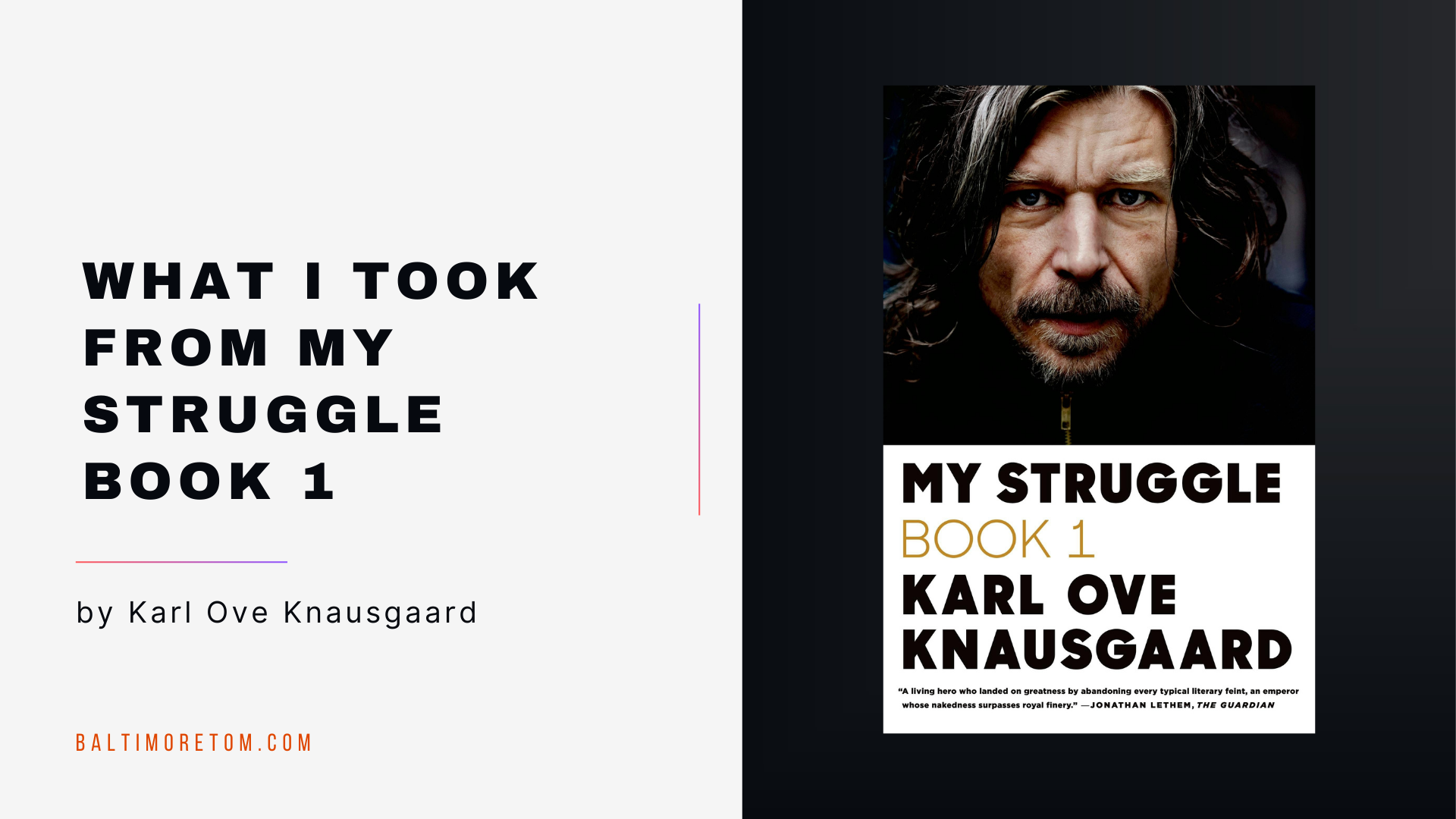What I Took from My Struggle Book 1 by Karl Ove Knausgaard

Table of Contents
TL;DR
Knausgaard’s My Struggle Book 1 examines ordinary moments with unflinching detail, particularly focusing on teenage embarrassment and the complex relationship with his father. The book demonstrates how seemingly mundane experiences carry profound emotional weight, and how the death of a difficult parent forces a reckoning with unresolved feelings and family dynamics.
Provided by Claude Sonnet 4
What I Took from My Struggle Book 1 by Karl Ove Knausgaard
The Weight of the Ordinary
What stayed with me most is how Knausgaard gives equal weight to brushing his teeth and to the death of his father. He does not sort life into major and minor events, everything is rendered with the same relentless detail. Reading it changed the way I looked at my own routines. Making coffee, walking through the neighborhood, even sitting at my desk at the start of the workday felt heavier, as if those small actions carried more meaning than I usually allow. The book made me more aware of how much of life passes by in these ordinary stretches, and how much they shape the texture of memory.
Memory as Excavation
The book made me think differently about how memory works. Knausgaard does not just recall what happened, he drags the full atmosphere of a moment back into the present. When he describes a teenage party, I could feel that same awkward heat of standing in a room where you do not belong, unsure of what to say, desperate to look natural. His writing reminded me that memory often returns as sensation more than story. I found myself thinking about my own past in this way, how certain moments are remembered not as clean narratives but as a rush of physical discomfort, a smell, or a sudden change in light that brings everything back.
The Father’s Shadow
The relationship with his father hit hard. Demanding, critical, often absent, yet always looming. I recognized that mix of fear and craving for approval. What unsettled me most were the scenes after his father’s death, when Karl Ove and his brother walk through the wreckage of the house: empty bottles, filthy rooms, the stench that clings to everything. There is no sentimentality in those passages, only the unavoidable reality of what a person leaves behind. It made me think about who I am as a father, what my sons will carry with them, and how much of that will be shaped by the everyday moments that do not feel important at the time. The shadow of a parent is long, and reading this forced me to reflect on the kind of shadow I cast.
The Brother Beside Him
Yngve, his brother, mattered to me more than I expected. In the middle of so much emotional chaos, he is steady, quieter, more restrained. When the two of them clean the house together, the silence between them feels like its own form of expression. Their unspoken coordination and quiet persistence struck me as a portrait of brotherhood that felt honest and familiar. It reminded me that grief often shows itself less in words than in the way people work side by side, carrying out the same grim tasks because someone has to.
Adolescent Intensity
The teenage sections made me remember how desperate those years felt. Karl Ove’s humiliation at parties or fumbling attempts to buy beer are not small stories, they capture what it was like to live inside a body and mind that never felt right. Reading those pages, I remembered my own teenage embarrassments with an almost physical wince. That intensity is easy to forget as an adult, but the book brought it back with full force. Nothing matters and everything matters at the same time, and you never know which is which until much later.
The Texture of Experience
Knausgaard’s relentless detail can feel overwhelming, but it had an odd effect on me. I started paying closer attention to small things: the way light falls in my office in the late afternoon, the sound of traffic drifting in through an open window, the familiar rhythm of routine chores. His writing insists that the ordinary is not filler, it is the substance of life. The act of paying attention became its own lesson. I caught myself slowing down, not to savor but to notice, and that noticing is what gave the moment its weight.
Living with the Past
The book left me with a deeper sense of how the past never really loosens its grip. The adult Karl Ove, exhausted and angry while cleaning out the house, is still the boy terrified of his father’s judgment. Reading this made me notice how often I catch glimpses of younger versions of myself in the present, moments when I still feel like the kid, not the adult. The past does not end, it lingers and reshapes, sometimes quietly, sometimes with a force that is hard to ignore.
Final Thoughts
My Struggle Book 1 convinced me that ordinary consciousness is worth this kind of attention. The book is not dramatic in the usual sense, but it made me look differently at my own life. I carried it into my days, catching myself in small moments and wondering how they might read if written with this kind of unflinching honesty. That was the gift of this first volume. I am curious to see how Book 2 will extend that same intensity across an even larger stretch of life, and what it will make me see differently about my own.